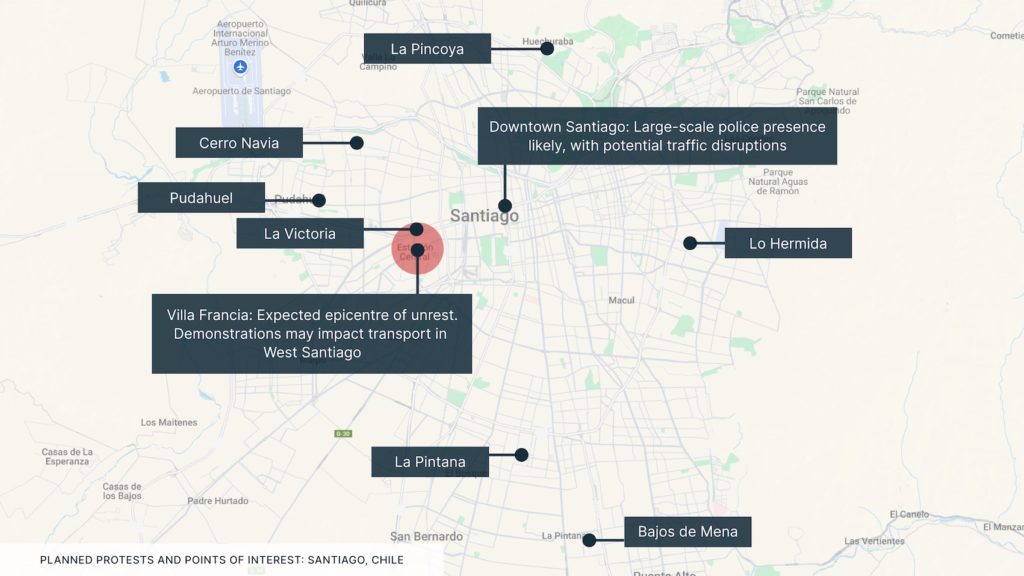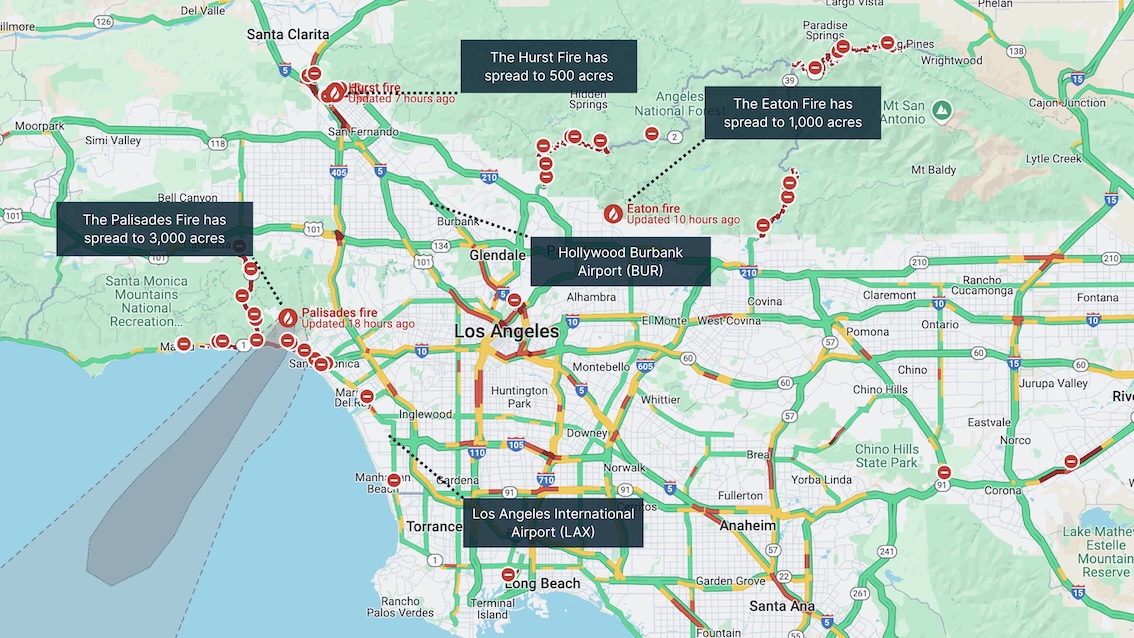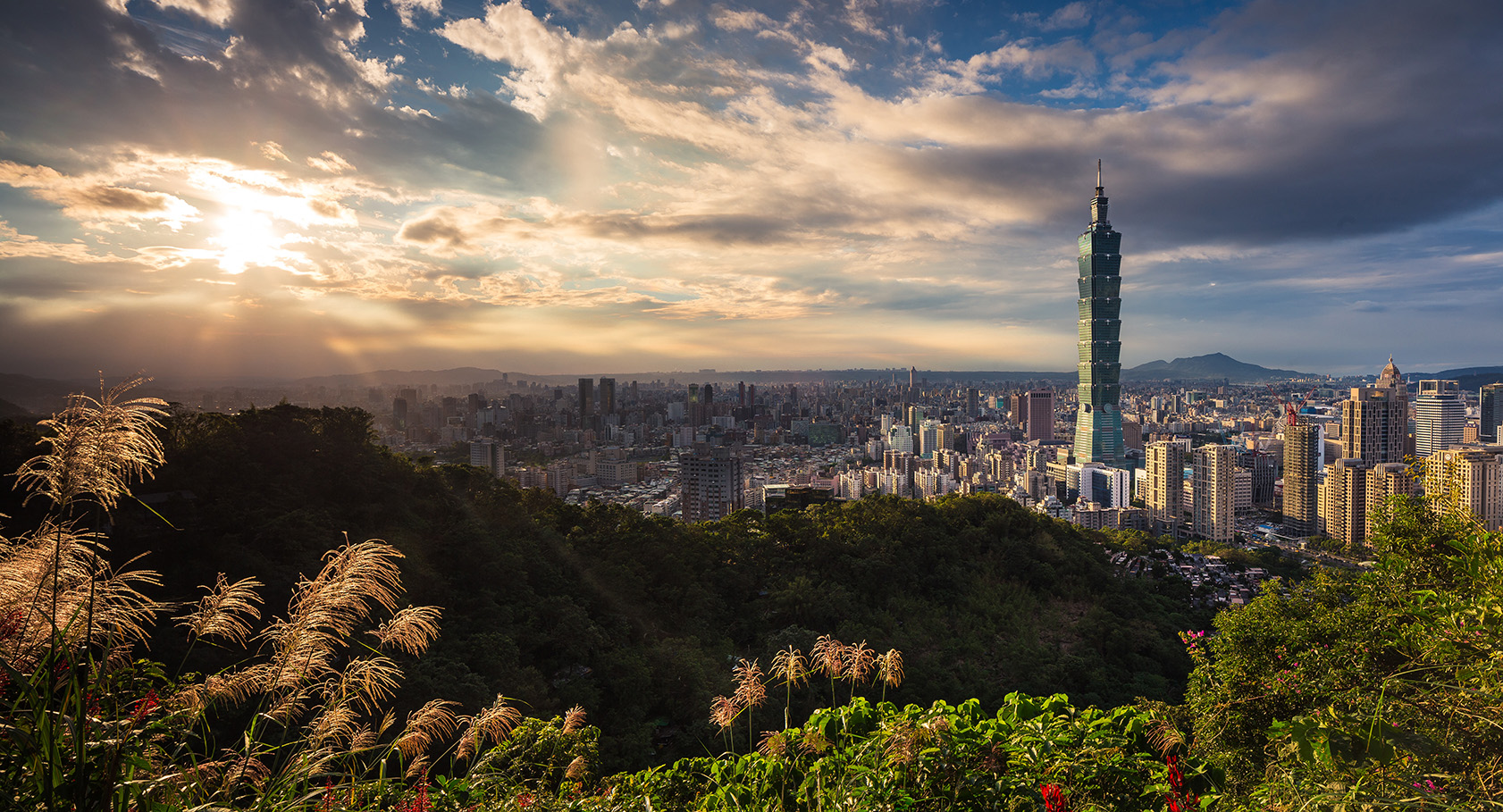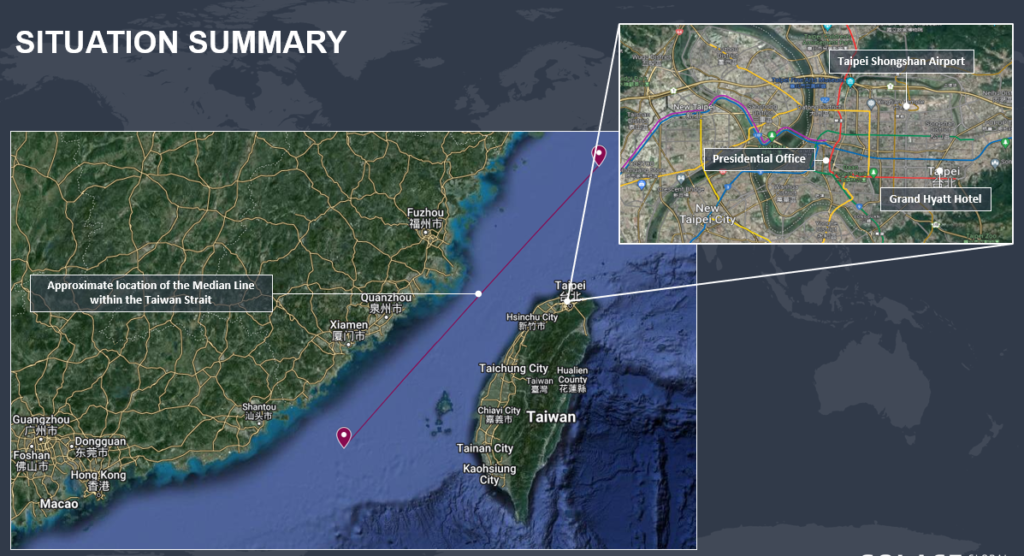Alert+
Delays and Closures Expected Following Major Outages in Spain and Portugal
Intelligence cut off: 14:00 BST 28 April 2025
At approximately 12:30 local time (10:30 UTC) on 28 April, Spain, Portugal, Andorra, and parts of France and Belgium experienced power outages. The outage was most widespread in Spain and Portugal, hitting several Spanish regions in the north and south. In Portugal, the blackouts affected most of the country.
In Spain, train services have been significantly affected, with trains ceasing to operate at all stations in Spain according to the national operator, Renfe, and passengers were evacuated from metro systems and trains. Airports across the country, including Madrid’s Barajas Airport, have activated contingency generators, but considerable delays are ongoing. The disruptions have also affected hospitals, ATMs, shops, restaurants, traffic lights, and mobile networks across the region. In Portugal, the metro in Lisbon and Porto have been affected and Lisbon’s Humberto Delgado airport has been disrupted. Portuguese airline TAP Air has informed passengers to avoid heading to airports.
The Spanish operator Red Electrica has declared that it is beginning to restore power in northern and southern regions, indicating that it will ‘gradually’ return. The full restoration is expected to take six to ten hours. While parts of France temporarily lost power, electricity has since been restored.
INTELLIGENCE ANALYSIS
Increased Crime and Emergency Response Delays Likely During Power Outage
While the cause has not yet been fully established, a fire in southwest France reportedly damaged a power line between Perpignan and eastern Narbonne, potentially triggering the blackouts. Portugal’s government announced that the incident appeared to stem from outside the country, and a cabinet minister suggested it may be a problem with the distribution network in Spain. Domestic media have pointed to issues with the European electric grid, which may have impacted Spain and Portugal’s national grids. Spain’s cybersecurity institute is investigating the possibility that it was caused by a cyberattack.
During the power outages, it is highly likely that there will be a temporary increase in opportunistic crime and petty theft. This is likely exacerbated by the fact that citizens have been asked not to call the emergency number, 112, unless in an emergency, to avoid overloading the phone lines.
Significant traffic disruptions are almost certain, particularly in Spain and Portugal. Traffic light outages will highly likely trigger increased congestion, which will likely be exacerbated by rail network disruptions, forcing more people to drive. There will likely also be higher rates of road traffic accidents. Portuguese police have deployed extra officers to assist with traffic circulation. There will highly likely be a knock-on effect to travel over at least the next 24 hours, even after power is restored.
Travel Risk Advice: Safety Guidelines for Spain, Portugal, Andorra, France and Belgium
- Allocate more time for travel and reassess the necessity of travel. Avoid using all public transport. Avoid all nighttime travel during power outages. Taxis should be booked well in advance due to increased demand caused by disruptions to public transport.
- Due to the highly likely increased traffic congestion and likely increased rates of road traffic accidents in areas impacted by traffic-light failures, it is advised to avoid any non-essential driving.
- If scheduled to fly, confirm flight status with the carrier prior to travelling to the airport.
- Note that power grid disruptions are likely to have short-term impacts even after power is restored. Likewise, assume that further power outages remain possible in the immediate term.
- Note that power outages can coincide with an increased risk of crime. Take heightened crime-mitigation measures.
- Avoid all solo travel and nighttime movement if the disruptions persist. Ensure that residential or office premises are secured.
- Ensure that you always carry personal identification documents or copies.
- Turn off appliances to prevent damage from electricity surges when power is restored.
- If available, use emergency light sources, like a battery-powered or wind-up torch. If using candles, be wary of fire hazards. Only run generators outside, in a clear area away from any building openings.
- Prioritise sending SMS messages over making phone calls as networks are likely to be overloaded.
- Monitor the Solace Secure platform and trusted local media. Disinformation is widely propagated during crises.

Disruptions Expected During March 29 Demonstrations in Chile
Intelligence cut off: 10:00 GMT 28 March 2025
On 29 March, Chile will observe the “Day of the Young Combatant” (Día del joven combatiente). The day commemorates the killing of the two Vergara Toledo brothers in Santiago in 1985 during the dictatorship of Augusto Pinochet. The two brothers were allegedly part of the Revolutionary Left Movement (MIR), a radical left-wing group that was at the forefront of the struggle against the dictatorship. The commemoration also extends to the other activists who were killed or imprisoned during the dictatorship. The anniversary has continued to be politically relevant, reflecting broader anti-government and anti-police sentiment.
There have been multiple notable instances of violence and vandalism during past anniversaries. In 2008, a series of bomb threats were sent to government offices and private businesses, including banks and media channels. In 2015, a police officer (Carabiniere) was shot and killed while carrying out an operation in La Victoria, Santiago. Even in years where similar incidents have not occurred, there are often reports of rioting and street violence, particularly at night after official commemoration events end. Activists frequently target businesses with improvised explosives and other weapons, as well as attacking police forces.
Due to its association with violent episodes and radical left-wing groups, the commemoration is politically controversial. Elements of the Chilean right have criticised the anniversary, with some publications calling it “Day of the Young Delinquent”.
Open-source intelligence (OSINT) investigations indicate that several protests are planned to occur in downtown Santiago on 29 March. A rally is scheduled for the Estacion Central area of Santiago starting at 15:30 local time. The area of Villa Francia in Estacion Central is a major focal point for protests, as it is the area where the two Vergara Toledo brothers were killed.

INTELLIGENCE ANALYSIS
High Likelihood of Violent Unrest During Day of the Young Combatant
There is a high likelihood of demonstrations coinciding with the commemorations. Unrest is likely to start in the late morning of 29 March and continue throughout the day, highly likely intensifying in the evening when organised rallies and protests conclude.
Santiago will almost certainly be the epicentre for protests and the city most impacted by traffic disruptions. The primary hotspot of unrest will almost certainly be Villa Francia in Estacion Central, where the 1985 killings occurred. Additionally, areas that will likely be affected include La Pincoya in Huechuraba, La Victoria in Pedro Aguirre Cerda, Lo Hermida in Penalolen, Bajos de Mena in Puente Alto, Pudahuel, La Pintana, and Cerro Navia.
Outside Santiago, unrest is possible in central districts of Valparaiso, Conception, Telmuco, and other Chilean cities. There is a realistic possibility that protests will be driven by other grievances disconnected from the commemoration. For instance, there are ongoing protests in Valparaiso over a controversial fishing sector law; local left-wing groups may seek to stage joint unrest during the Day of the Young Combatant to capitalise on visibility.
While protests during the morning and early afternoon will likely be peaceful, clashes with security forces are possible. Later in the day, particularly at night, the likelihood of violent unrest will increase considerably.
Past demonstrations during the Day of the Young Combatants have consisted of protesters erecting makeshift barriers, burning tyres, vandalising private businesses (particularly banks and the offices of foreign companies), firing projectiles including fireworks, and throwing Molotov cocktails at the police and other targets.
Some demonstrators will likely be armed and are likely to seek direct confrontation with police forces. Chilean police will almost certainly deploy violent crowd control measures in response to the unrest, including tear gas, pepper spray, water cannons, and possibly rubber bullets. Past demonstrations have resulted in dozens of arrests.
While protesters are unlikely to intentionally target bystanders, the nature of the unrest will likely increase the potential for incidental harm.
Travel Risk Advice: Safety Guidelines for Chile
- Avoid Estacion Central throughout 29 March.
- Closely monitor local news reports and government alerts.
- Monitor official public transport channels for updates on disruptions to mobility in Santiago and other affected cities.
- Plan for alternative routes and means of transport in Santiago and other large cities. Allocate more time for all transport.
- If caught in a protest area, try to leave quickly if it is safe to do so.
- If you are in a crowd and unable to leave, take precautions to minimise the risk of crowd crush. These include staying upright, moving away from all hard barriers, going with and not against the crowd, and holding your arms at chest level in a boxer-like stance to relieve pressure.
- Minimise all travel on foot.
- Avoid travelling after dark due to a greater risk of violence.
- Ensure that you always carry personal identification documents or copies.
- Have emergency contact numbers saved on your phone. These should include the local authorities, medical facilities, and any consular support.
- Ensure that mobile phones are charged.
- Monitor the Solace Secure platform and trusted local media.
Subscribe to free weekly intelligence

Power Outages and Evacuations Across LA Amidst Growing Wildfires
Intelligence cut off: 15:00 GMT 08 January 2025
Fast moving wildfires are currently ongoing in California. At least three separate blazes are currently ongoing around the Pacific Palisades (Palisades Fire), Pasadena (Eaton Fire), and Sylmar (Hurst Fire) neighborhoods of Los Angeles.
The Palisades Fire has burned through over 3,000 acres, causing significant damage, including the destruction of beachfront homes in Malibu; the Eaton Fire has spread to 1,000 acres; the Hurst Fire has grown to 500 acres. None of the wildfires have been contained as of the time of writing.
No deaths have been reported so far. Over 1,400 firefighting personnel have been deployed to combat the blazes and Governor Gavin Newsom declared a state of emergency.
Mandatory evacuation orders have been issued for over 80,000 people in Southern California. The Palisades Fire has triggered mandatory evacuation orders for the Pacific Palisades and surrounding areas. Residents in Malibu not currently under evacuation orders have been informed that they should prepare for evacuation anyway due to the how fast the wildfires are moving. A smoke advisory is in place around the Malibu Coast, Santa Monica, and Beverly Hills.
The Eaton Fire has prompted mandatory evacuation orders for the area north of Orange Grove/Rosemead Boulevard, east of Lake Avenue, and west of Michillinda Avenue. The Hurst Fire has triggered evacuation orders for northwest Sylmar and surrounding areas.
Major roads including Sunset Boulevard and part of the Pacific Coast Highway became gridlocked as residents fled the wildfires. Highway lanes near Topanga Canyon Boulevard closed due to the wildfire’s fast expansion. Drivers abandoned their cars on Sunset Boulevard, forcing The Los Angeles Fire Department to deploy bulldozers to Subset Boulevard to allow fire crews to pass abandoned vehicles.
The extreme conditions have resulted in widespread power outages, affecting more than 200,000 customers in Los Angeles County. Emergency shelters have been opened at Westwood Recreation Center and Ritchie Valens Recreation Center for evacuees from the Hurst and Palisades fires.

Map of the Palisades, Eaton, and Hurst fires to the north and west of Los Angeles.
SOLACE GLOBAL COMMENT
Evacuation and Response to 2025 LA Wildfires
The fires began on 7 January after a bush fire was caught by a windstorm, spreading the fire into surrounding areas. California is currently affected by the northeasterly Santa Ana winds, which are caused by high pressure over the Great Basin. These winds have fuelled many of California’s worst wildfires in the past, including the 2018 Woolsey fire, which killed three people.
The winds have reached speeds of approximately 100 km/h, and could reach 160 km/h in the mountains and foothills, areas which have not experienced substantial rain for months. Winds are expected to worsen on 8 January and continue into 9 January. They will highly likely continue to spread the wildfire, despite the fire department’s efforts.
Peak wildfire season in California typically occurs between July and October each year. Although wildfires are unusual in January, high winds have combined with particularly dry conditions in California to contribute to fertile conditions for the wildfire to spread. Rains of over 0.25 centimetres have not been experienced in Southern California since May 2024. The Santa Ana winds have exacerbated the dry conditions by reducing the humidity levels.
Fire hydrants have reportedly run out of water in the Palisades area. While water tanks are currently being used to supply water to fire fighters, this severely limits the extent to which the fire department can tackle the ongoing wildfires. The reason for the water shortage is currently unknown, but water shortages at fire hydrants may occur because of power outages, high demand during large fires, broken water mains, or drought conditions. Given the recent dry weather, the issues are likely influenced by low water supplies in Southern California.
The northeasterly winds are reportedly pushing smoke southwest towards Malibu. The South Coast Air Quality Management District (AQMD) predicts that PM2.5 levels will remain in the Unhealthy category in the Air Quality Index. Authorities have advised that residents utilise respirators when outside.
INTELLIGENCE ANALYSIS
Wildfire Spread in Southern California: High Winds and Infrastructure Strain
The fire department will highly likely continue to struggle to contain the fires. Increasing windspeeds and dry conditions already make it difficult to prevent the fast spread of the fire. This issue is exacerbated by the water shortages in the Palisades area, which is the location of the largest wildfire. Furthermore, the high windspeeds have meant that they have been unable to launch firefighting aircraft.
Given windspeeds are set to increase over the course of 8 January, wildfires are highly unlikely to die down over the next 24 hours. Despite the fire department utilising bulldozers to clear roads, the large quantities of abandoned vehicles will highly likely continue to hinder fire fighting operations.
Fire hydrants running out of water is not unprecedented. Recently, fire departments encountered low water pressure when tackling wildfires in Camarillo, California in November 2024, causing two water pumps to become inactive. While this slowed firefighting efforts, firefighters prioritised life-saving missions over protecting property and reportedly reduced the potential fatalities. Similar focus will almost certainly be employed in the Palisades area, where there is a water shortage.
In the aftermath of the wildfires, residents who have had their property destroyed are likely to ask questions regarding the lack of water in the fire hydrants. Much of California’s water infrastructure was built in the 1960s and 1970s, lacking advanced modern technology and prone to leaks and inefficiency. Given California has one of the highest water needs in the US, the government is likely to come under increasing pressure to modernise California’s water infrastructure in the months following the wildfire.
United Airlines has issued a travel waiver enabling itinerary changes for flights booked out of Hollywood Burbank Airport (BUR) and Los Angeles International Airport (LAX) between 7 and 9 January. Some flights into BUR, situated approximately in the middle of the three wildfires, have been diverted to LAX because of smoke from the fires. LAX has not yet had significant flight disruptions but is approximately 30 kilometres south of the Pacific Palisades.
The Palisades fire is currently burning in a westerly direction, according to the Los Angeles Fire Department. Therefore, there is a realistic possibility that LAX will avoid significant disruptions. However, if there is a shift in winds causing the Palisades fire to spread further south, then it will likely result in significant airport disruptions. While significant shifts in Santa Ana winds are unlikely, changes in the pressure systems could influence the wind direction.
Travel Risk Advice: Precautions for LA Wildfire Zones
- Adhere to all evacuation warnings issued by authorities promptly.
- Do not attempt to extinguish fires on your own; leave firefighting to professionals.
- Pack a grab-and-go bag containing essential items such as water, a flashlight, a portable charger, important documents, non-perishable food, and first aid supplies.
- Stay informed by monitoring local news and official updates regarding the wildfire’s spread.
- Familiarise yourself with the locations of government-designated evacuation shelters.
- Wear protective clothing, including long-sleeved shirts, long trousers, gloves, and an N95 mask, to safeguard against smoke and heat exposure.
- Avoid using water unnecessarily if firefighters are operating in your area, as resources may be limited.
- Plan multiple escape routes in advance, considering possible congestion or blockages caused by fires.
- If driving, keep windows closed and set your vehicle’s air conditioning to recirculate to minimise smoke exposure.
- Drive cautiously and at reduced speeds in areas with poor visibility due to smoke.
- If you plan to fly, confirm flight status with your airline to avoid complications from cancellations.
- Do not return to your home until authorities officially declare it safe to do so.
- Be aware that smoke may persist in the air even after the wildfire is extinguished. Continue wearing an N95 mask when returning to affected areas.
Subscribe to free weekly intelligence

US speaker Nancy Pelosi visits Taiwan

Situation Summary
A delegation of American politicians, including House Speaker and senior Democratic politician Nancy Pelosi, landed at Taipei Shongshan Airport in the Republic of China (ROC, or Taiwan) on 2 August. The visit to Taiwan comes amidst an ongoing tour of the Asia-Pacific by the high-profile delegation, which has been conducted for the purpose of reaffirming American commitments to the region. Countries such as Singapore, Malaysia, South Korea, and Japan were included on the official itinerary list, but the visit to Taiwan was hidden, likely out of concerns that any official confirmation would prompt a harsh response from the People’s Republic of China (PRC, or China).
Intelligence suggesting that Nancy Pelosi would visit Taiwan prompted a series of warnings from the Chinese government and state media broadcasters. China warned that any visit to Taiwan would be considered as a provocation that would necessitate a diplomatic and, in some communications, military response from Chinese authorities. Speculation of Nancy Pelosi’s visit prompted China to engage in aggressive military maneuvers in the Taiwan Strait during the morning of 2 August, including the positioning of warships and aircraft along the contested Median Line. A Distributed Denial-of-Service (DDoS) attack was later recorded against the website of Taiwan’s presidential office.
Four US Navy warships, including the USS Ronald Reagan aircraft carrier and the USS Tripoli amphibious assault ship, have been operating east of Taiwan. US officials have stressed that their positioning was prompted by a “routine deployment”, but US military authorities remain on high alert due to the increased risk of miscommunication and miscalculation stemming from the elevated number of both US and Chinese military assets in the region.
In response, Chinese authorities announced three-day military drills will commence near Taiwan from 4 August.
Solace Global Comment
Nancy Pelosi’s visit to Taiwan represents the most senior visit by a US official since the visit of House Speaker and Republican politician Newt Gingrich to Taipei in 1997. Newt Gingrich’s visit prompted irritation within China but was tolerated at the time. Since 1997, however, China’s role in the global economy has grown exponentially, and China has begun to exercise a more assertive role in both regional and global diplomacy. There is now an increased willingness within the Chinese government to adopt a more hawkish stance towards Taiwan, which is actively considered to be one of China’s core national interests, alongside increasingly bellicose rhetoric regarding reunification.
Taiwanese self-governance and the perception of Taiwan as an integral territory of China has prompted the Chinese government to enforce a ‘One China’ policy in its global relations; a practice which the US has acknowledged since President Richard Nixon’s decision to thaw relations between the US and China in 1972. Despite this, the incumbent Chinese Foreign Minister Wang Yi has accused US President Joe Biden of conducting a “fake” One China policy, and Chinese President Xi Jinping has warned the US “not to play with fire” over the legal and diplomatic status of Taiwan.
Although an invasion of Taiwan remains highly unlikely in the near-term due to the complexity of an amphibious assault across the Taiwan Strait, geopolitical and economic impact, and the potential for US involvement in the conflict, Nancy Pelosi’s visit is certain to escalate tensions further and will very likely lead to an increased Chinese military presence in the region over the coming weeks. Chinese officials have likely calculated that there is a need to reassert Chinese credibility over their red lines in Taiwan, given the current trajectory of US-Taiwan relations. A further military response remains realistically possible, such as live-fire exercises, significant naval and aerial posturing off Taiwan, or potentially missile tests in the vicinity of the Taiwan Strait. A Taiwanese response should be anticipated, and the potential for miscalculation should not be ruled out. China may also seek to conduct retaliatory actions towards the US through economic levers.

Solace Global Advice
•In the event of a significant security development, travellers in Taiwan should follow any instructions issued by the Taiwanese government.
•Political tensions may disrupt airspace in both China and Taiwan. It is advised to monitor flight information and check with your travel provider if you are unsure of the status of your flight.
•Instances of civil unrest within Taiwan cannot be ruled out. Travellers should avoid all demonstrations and large public gatherings as they may escalate quickly and without warning.
•Areas where political figures are known to gather are likely to be focal points for political activism and unrest, especially sites due to be attended by Nancy Pelosi or other delegates. You should be particularly vigilant in these areas and follow any specific advice from the local security authorities.
•Expect localised travel disruption and an enhanced security force posture in the short-term as Taiwanese authorities increase measures to protect the US delegation.
• Be aware that China may seek to retaliate for Nancy Pelosi’s visit within the economic, cyber, and diplomatic domains, which could place additional restrictions on business operations and travel within China, Taiwan, and the wider region.
• Make sure you are familiar with contact details for the emergency services (in Taiwan – dial 110 for the police, 119 for medical assistance or the fire brigade).
• Exercise increased caution, remain vigilant, be aware of your surroundings and report any suspicious activity to security personnel as soon as possible.
• If caught in the vicinity of a security incident, seek shelter immediately and leave the area if safe to do so. Continue to adhere to all instructions issued by authorities and obey the security cordon in place.
• Report any suspicious items and behaviours to the nearest security or police officials.
• Monitor the Solace Secure platform and local media for updates.
Understand the situation with bespoke intelligence
Be in the know with intelligence reports built directly around your operational requirements.
